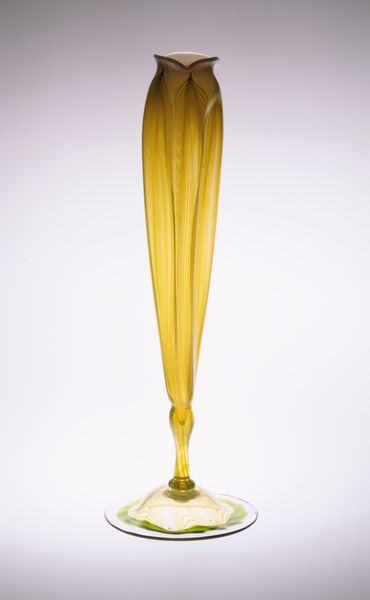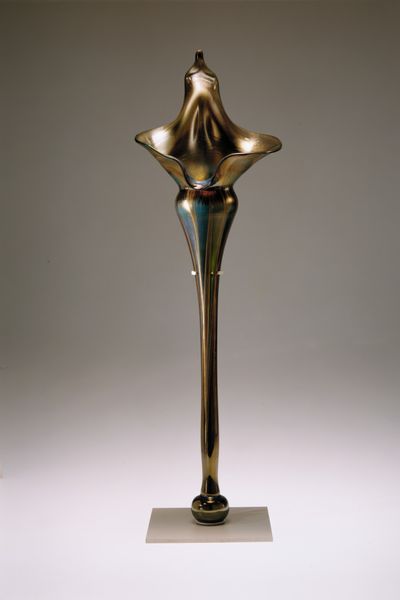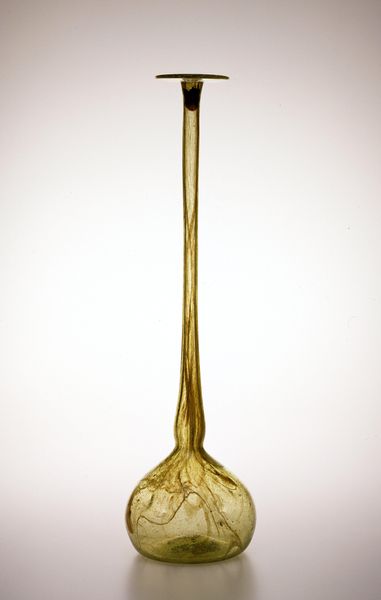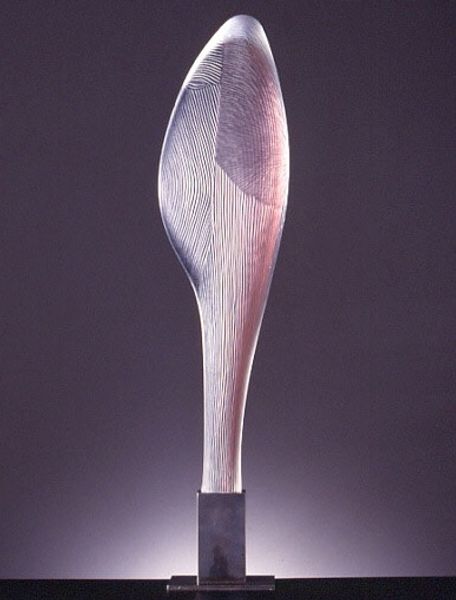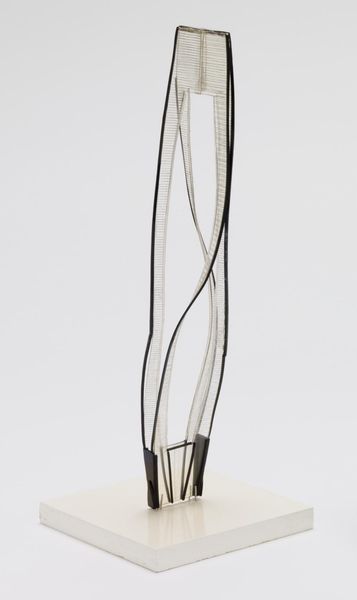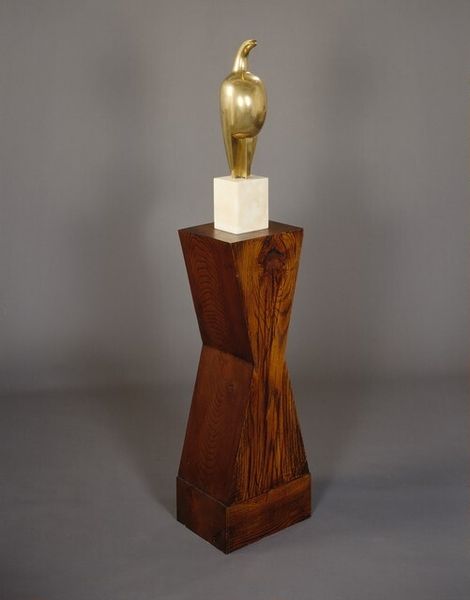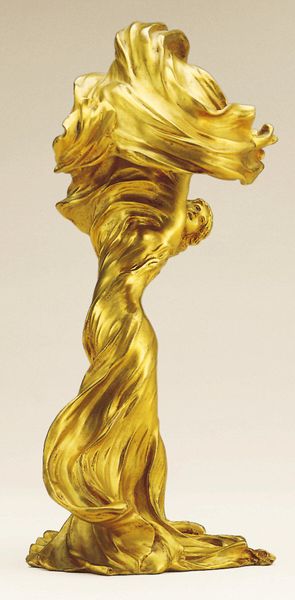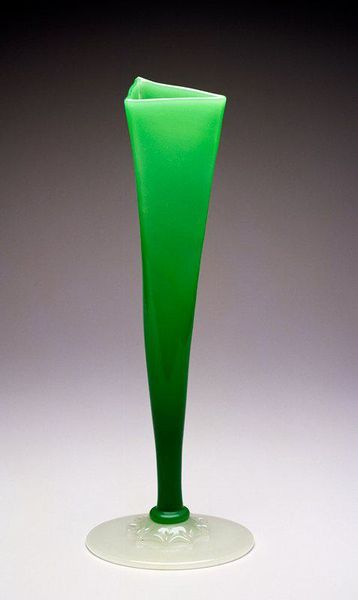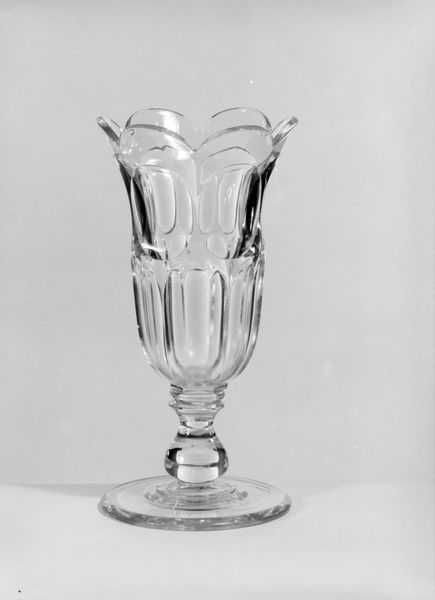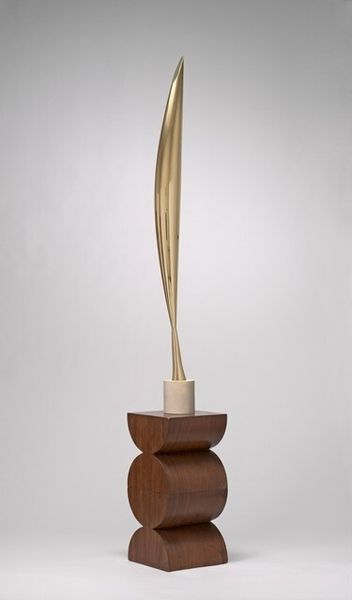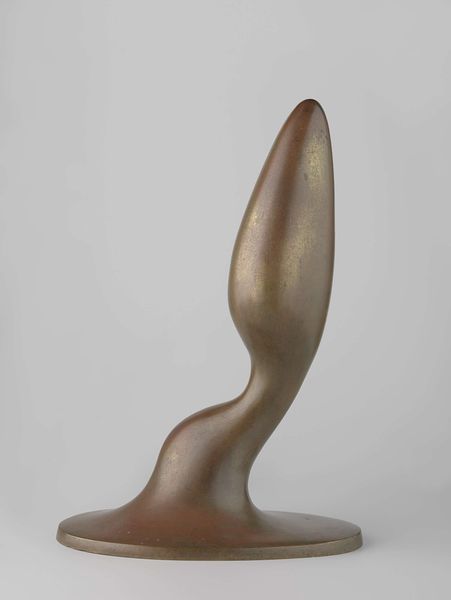
ceramic, glass
#
art-nouveau
#
ceramic
#
glass
#
ceramic
#
decorative-art
Dimensions: H. 12 3/4 in. (32.4 cm)
Copyright: Public Domain
Curator: Here we have an exquisite vase, crafted by Louis Comfort Tiffany between 1893 and 1896. Its home today is right here at The Metropolitan Museum of Art. Editor: Immediately, I’m struck by the elongated, almost attenuated form. The colours – primarily ambers and golds – give it a rather regal, sophisticated air. It is remarkably balanced for what appears to be such a fragile material. Curator: Indeed. The elegant proportions of the vase speak to a deep understanding of form and the aesthetics of Art Nouveau, emphasizing curvilinear designs and drawing inspiration from the natural world. The interplay between the earthy base with swirling green patterns and the rising body create a sense of organic growth, and upward movement. Editor: But it’s the materials and production process that fascinate me most. Tiffany was pioneering with glass. One wonders about the labour involved, the specific techniques used to achieve that striated effect within the glass itself. Was it blown, cast, or molded? What were the social conditions for the artisans who contributed to this decorative piece? Curator: Tiffany's innovative "Favrile" glass technique, for which he is renowned, allowed him to manipulate molten glass and introduce metallic oxides to create these iridescent colours and flowing patterns during the creation of the object. The focus was very much on the beauty and the aesthetic experience it invoked, pushing the boundaries of traditional glasswork. Editor: Yet that pushing of boundaries was made possible through a certain labour structure, within specific industrial processes. The “artistic” vision couldn’t have materialized without a factory system and craftspeople dedicated to the making process. How did the art object enter the marketplace, and who had access to purchase and consume such luxurious designs? Curator: These are valid points that force us to expand our understanding of art beyond mere surface beauty. Still, there is much to admire simply by engaging with its formal composition – the colours, the shape, the proportions. Editor: Of course. But that aesthetic appreciation deepens when we consider the material reality of its production and its role within the society it served. It moves beyond the decorative, taking us into a world of industrial making and cultural meanings. Curator: Precisely, seeing both sides allows for the work to be truly understood and respected for all its intricacies. Editor: I leave here admiring not only the design but also the material story etched into this beautiful vessel.
Comments
No comments
Be the first to comment and join the conversation on the ultimate creative platform.

